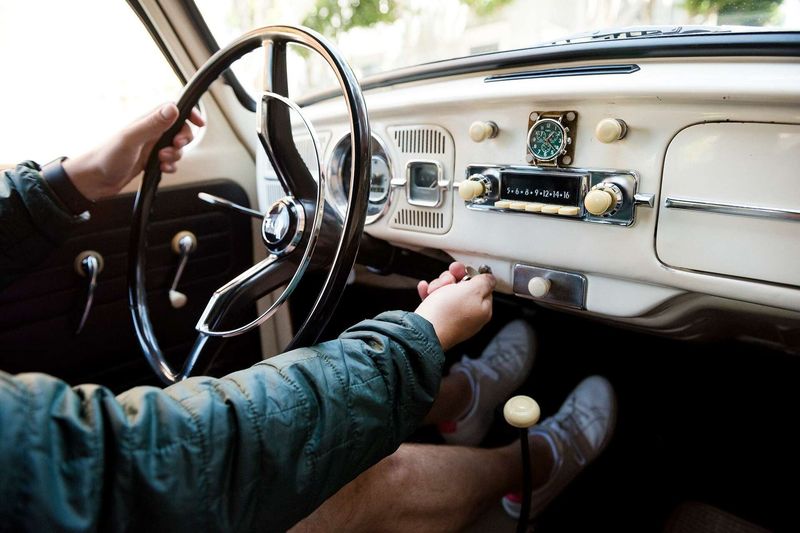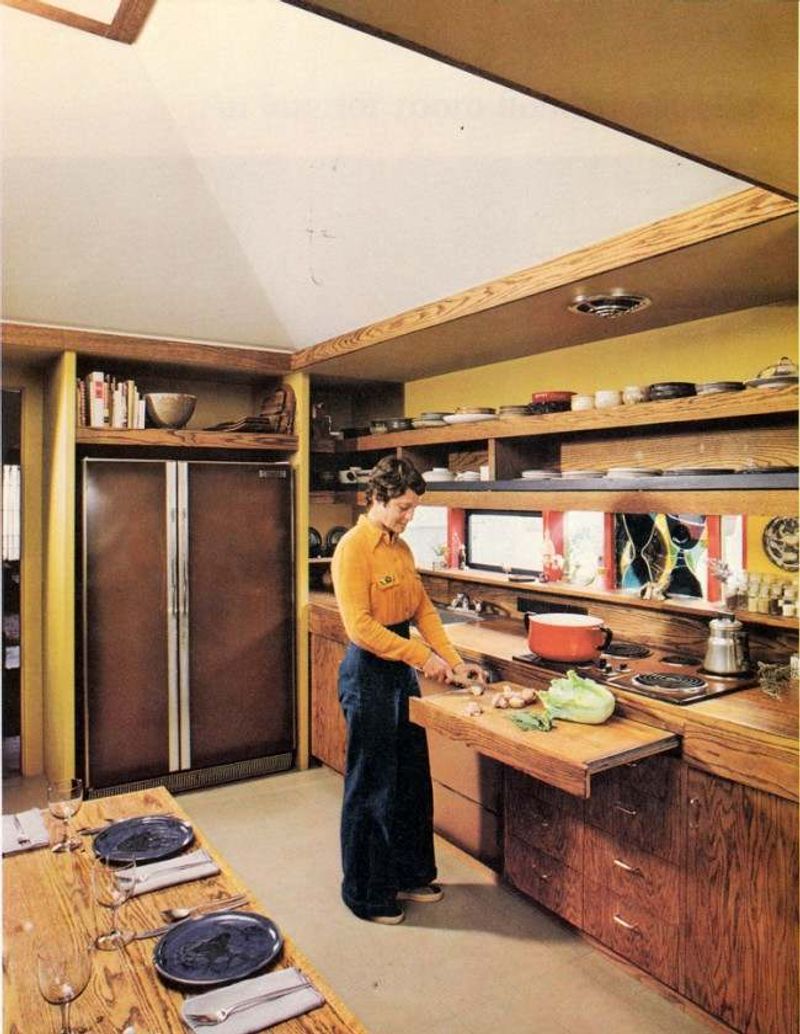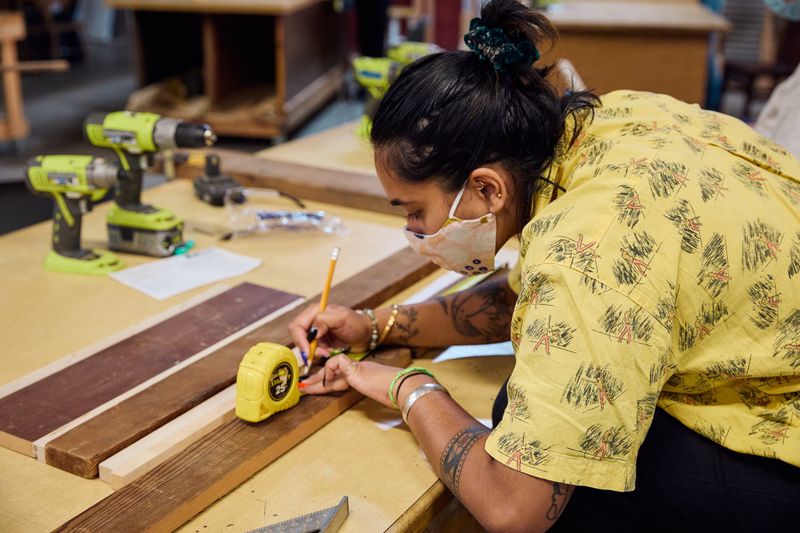Remember when young people could fix things, find their way without GPS, and solve problems with their hands? The 1970s teenager had a toolkit of practical abilities that many of today’s college graduates have never developed.
Technology has given us amazing conveniences, but it’s also created a generation that struggles with basics their parents and grandparents took for granted.
1. Driving a Manual Transmission
The three-pedal dance was second nature to ’70s teens. Learning the perfect clutch release point was a milestone, usually taught by dad in an empty parking lot amid the smell of burning clutch plates.
Manual transmissions dominated roads back then, making it an essential skill rather than a specialty. Teens mastered the hill-start without rolling backward—no electronic hill assist needed!
Today, finding a new car with a stick shift is increasingly difficult. Many young drivers have never experienced that satisfying feeling of nailing a perfect gear shift or the connection to driving that comes from controlling your own gears.
2. Balancing a Checkbook
Before banking apps tracked every penny, teenagers kept meticulous records in checkbook registers. Each purchase, deposit, and withdrawal was carefully noted in neat columns with running balances calculated by hand.
Making a math error could mean bounced checks and embarrassing fees. This practice taught more than arithmetic—it instilled financial awareness and spending discipline.
Modern graduates often rely entirely on digital banking, checking balances on phones without truly tracking their spending patterns. The accountability that comes from physically recording each transaction has largely disappeared, along with the satisfaction of reconciling to the penny.
3. Cooking from Scratch
Family dinner prep was often a team effort in the ’70s. Teenagers chopped vegetables, browned meat, and learned to season by taste rather than following TikTok recipes.
No meal kits delivered to the door—just well-worn recipe cards passed down through generations. Young people understood cooking fundamentals: how to make a roux, when meat was done, and how to rescue an over-salted sauce.
Fast forward to today, where many college graduates consider cooking to be heating something in a microwave. The patience and planning required for preparing meals from basic ingredients has become a specialized hobby rather than an everyday necessity.
4. Sewing and Mending Clothes
Needle and thread were household basics, not crafting supplies. When jeans ripped at the knee, ’70s teens patched them out of necessity rather than fashion. Home economics classes taught practical skills like hemming pants and replacing buttons.
Darning socks was routine maintenance, not a quirky hobby. Even boys knew how to sew on a button or fix a split seam.
Today’s fast fashion culture has created a throwaway mentality. Many graduates have never threaded a needle, assuming minor damage means replacement. The satisfaction of extending a garment’s life through simple repairs—and the self-sufficiency it represents—has largely vanished.
5. Using a Paper Map
Glove compartments once held folded road atlases, not charging cables. Teenagers learned to trace routes with their fingers, calculate distances using the map scale, and find alternate paths when needed.
Planning a road trip meant studying maps in advance, understanding cardinal directions, and navigating by landmarks and highway numbers. Being the navigator was a responsibility that required focus and spatial awareness.
Contrast this with today’s graduates who panic when cell service drops and their GPS stops working. The cognitive mapping skills developed through paper map reading—understanding how spaces connect and visualizing locations in relation to each other—have diminished in the age of turn-by-turn directions.
6. Basic Car Maintenance
Saturday afternoons often found ’70s teenagers helping with car maintenance in driveways across America. Checking and changing oil, rotating tires, and replacing spark plugs were common knowledge, not specialized skills.
Cars were simpler then—no computers or complex electronics to diagnose. Teens learned to listen for unusual sounds, recognize the smell of various fluids, and understand the mechanical relationships under the hood.
Many of today’s graduates view their vehicles as mysterious boxes that move when started. The connection between driver and machine has weakened, along with the confidence to handle routine maintenance and minor repairs without professional help.
7. Writing Letters and Addressing Envelopes
Long before text messages, teenagers kept friendships alive through handwritten letters. They mastered proper formatting—return address in the corner, date at the top, and a meaningful closing before their signature.
Penmanship mattered. Clear handwriting ensured your thoughts would be understood, and many teens developed distinctive styles that friends could recognize instantly.
The art of letter writing taught thoughtful communication. You couldn’t delete and rewrite instantly—each word had to be considered before committing it to paper. Today’s graduates might struggle to address an envelope correctly or compose a formal letter without templates, having grown accustomed to the immediacy and informality of digital messaging.
8. Household Repairs
Calling a handyman for every minor issue wasn’t an option for most ’70s families. Teenagers learned by watching and helping—unclogging toilets, patching drywall, or fixing squeaky doors.
The family toolbox wasn’t just dad’s domain. Young people of both genders knew the difference between Phillips and flathead screwdrivers and when to use each one.
Home maintenance was viewed as a normal part of life, not a specialized skill set. Today, many college graduates have never used a power tool or fixed anything more complicated than a smartphone screen. The self-reliance that comes from understanding how to maintain your living space has diminished with each generation.
9. Growing a Garden
Many ’70s teenagers knew the satisfaction of eating vegetables they’d grown themselves. Family gardens weren’t just hobbies—they supplemented grocery budgets and connected young people to food sources.
Kids learned when to plant different crops, how to identify beneficial insects from pests, and the patience required to nurture plants from seed to harvest. This knowledge came through participation and observation rather than YouTube tutorials.
The connection between food and its origins has weakened for many modern graduates. Some may experiment with houseplants but lack the confidence or knowledge to grow food. The rhythms of seasons and understanding of natural cycles that gardening teaches have been replaced by the convenience of 24/7 supermarkets.
10. Ironing Clothes
The hiss of steam and smell of warm cotton were familiar to teenagers who needed presentable clothes for school or work. Ironing boards regularly appeared in ’70s living rooms as family members took turns pressing their clothes.
Young people learned the proper temperature settings for different fabrics and how to navigate tricky areas like collars and pleats. Ironing wasn’t considered a burden but a normal part of looking put-together.
Today’s graduates often choose clothes specifically marketed as wrinkle-free or embrace the rumpled look. Many have never used an iron, missing out on the meditative quality of this routine task and the pride that comes from crisp, well-presented clothing.
11. Face-to-Face Conflict Resolution
Arguments in the ’70s couldn’t be resolved by ghosting someone or sending a carefully crafted text. Teenagers learned to work through disagreements in real time, reading facial expressions and adjusting their approach accordingly.
The phone mounted on the kitchen wall offered limited privacy for difficult conversations. Many conflicts had to be handled in person, teaching young people to manage emotions and communicate clearly under pressure.
Modern graduates often struggle with direct confrontation, having grown up with digital buffers between themselves and uncomfortable situations. The nuanced social skills developed through face-to-face conflict resolution—timing, tone modulation, and reading non-verbal cues—have atrophied in an era where disagreements can be handled from behind screens.
12. Time Management Without Digital Tools
Wall calendars and paper planners were command centers for ’70s teenagers. Appointments were written down once and remembered, not set with multiple digital reminders.
Young people developed internal clocks, knowing roughly what time it was without checking a device. They planned buffer time for travel and showed up early rather than texting “running late” at the last minute.
The discipline of managing time without technological crutches built stronger executive function skills. Today’s graduates often struggle when batteries die or apps crash, having outsourced their time awareness to devices. The cognitive load of remembering commitments has been replaced by dependency on notifications and alerts.












